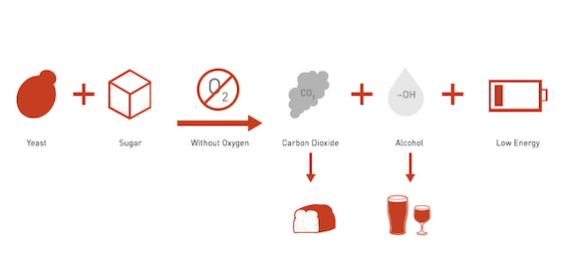Meghan Trainor might as well have been singing about fermentation instead of booties, because the idea is the same. It’s all about that yeast, ’bout that yeast, no fungus.

Meghan Trainor might as well have been singing about fermentation and yeast.
As you probably know by now, when it comes to winemaking, the major process involved is called fermentation, and in addition to other elements like, say, grapes and crushers and barrels, you need special little something called yeast in order to even think about making alcohol.
Let’s get something out of the way first: yeast are everywhere. Of course you find them on wine grapes and in wineries, but they’re all over your house, and both on and in your body. Basically, they’re like your microbial pets (or fingerprints, depending on how you look at it). Though there are some yeasts that cause spoilage and bad tastes, in general our relationship with them is quite beneficial.
This is particularly true in the case of winemaking. That said, you can’t use just any old kind of yeast to make good wine. The specific kinds of yeast that ferment sugar into alcohol in a reliable way without creating other odd flavors belong to a group called saccharomyces, or “sugar fungus,” in Latin.
When it comes time to make the wine, a winemaker can crush the grapes and depend on the yeasts that live on them and in the winery to start fermentation on their own. That’s called native or wild fermentation. This kind of fermentation can be a bit tricky since the grapes have to be in very good condition, the yeasts have to be present in sufficient amounts, and it is generally hard to control fermentation itself and keep it moving along at a consistent pace. However, many winemakers think that wild fermentation is a more accurate (and thus better) representation of the vineyard and its terroir, and you get wines that can vary dramatically from year to year.
In most cases these days, however, winemakers “inoculate” the grape juice with commercial strains of yeast that have been created and refined to tolerate more variables in the environment, including those of temperature and alcohol level. Thus, they promote an efficient, smooth fermentation process where you tend to get wines that are more consistent in terms of quality and style from one year to the next.

The kind of fermentation that produces alcohol is anaerobic and follows these steps. Image source: Singer Instruments.
Lest you think it’s simply a matter of getting some fancy yeast into that grape juice and the wine makes itself, keep in mind that yeast can be a little picky. First, they only like temperatures between about 50-90 degrees Fahrenheit (give or take). Otherwise they start dying off. But fermentation actually raises the temperature! As yeast metabolize the sugar into alcohol, it gives off a lot of energy, which escapes in the form of heat, thus raising the temperature of the wine and endangering the yeast themselves, as well as making fermentation a bit more unstable after a certain threshold. So winemakers have to watch the temperature and keep it within an ideal range.
Second, yeast need a few things to survive in addition to the sugars from the grape juice…otherwise they can start turning out some bad-tasting byproducts. Those other nutrients include oxygen (just a bit before fermentation) in order to stay healthy for the process, nitrogen to keep fermentation moving along, and various vitamins and minerals such as potassium and magnesium. So you’ve got to keep them healthy in order for them to even want make that alcohol in the first place.
If you’ve met those conditions, there are a few other things to consider. When you add yeast to the grape juice, fermentation doesn’t just start. Just like when you move into a new home, it takes yeast a little while to acclimate to their new surroundings. Usually a day or two. Then they start reproducing like bunny rabbits and attacking all that sugar. As they start eating their way through it and producing heat and alcohol, the yeast population growth begins to decelerate and finally to decline with the now-limited resources on hand. Eventually, the population plateaus and starts to die off due to the toxicity of the alcohol, and those in the wine will be dead by the end of fermentation.
After that, winemakers usually fine the wine to remove the dead yeast cells and make the wine itself clearer. So though those little beasties are usually nowhere to be seen in your final bottle of wine, they’ve played an indispensable part in the process, without which, we wouldn’t have alcohol!

